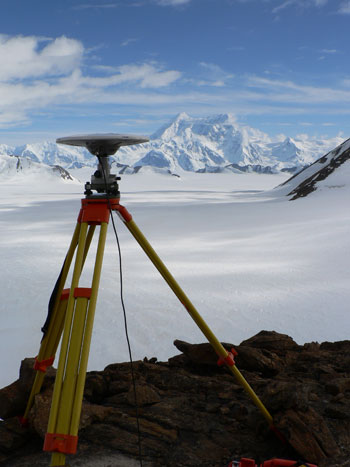The Mobile Margin of Far North America:
GPS Constraints on Active Deformation in Alaska and Canada and the Role of the Yakutat Block
By:
Julie Elliott
University of Alaska Fairbanks
| When: | Friday, December 10, 2010, 10:30 a.m. to 11:30 a.m. Join us for coffee beginning at 10:00 a.m. |
| Where: | Seminar Conference Room, 10100 Burnet Road, Bldg 196-ROC, Austin, Texas 78758 |
| Host: | Sean Gulick, UTIG |
Click for Live Broadcast

Abstract
Instead of a comparatively simple interaction between the Pacific and North American plates, with relative motion accommodated on a single boundary fault, the southern Alaska margin is comprised of a number of small blocks and deformation zones with relative motion distributed across a variety of structures.
Much of this complexity can be attributed to the Yakutat block, an allochthonous terrane that has been colliding with southern Alaska since the Miocene.
Newly developed GPS-derived tectonic models provide a present-day snapshot of the Yakutat block collision and its effects on southern Alaska and eastern Canada. The Yakutat block moves NNW at a rate of 5 cm/yr, resulting in 4.5 cm/yr of convergence with southern Alaska. Along the block's eastern edge, the majority of the relative plate motion is accommodated on the dextral Fairweather-Queen Charlotte fault system, but part of the strain from the collision is transferred further east. This strain transfer results in clockwise block rotations directly inboard of the strike-slip system and small northeasterly motions that extend for 100's of kilometers into the northern Canadian Cordillera.
The northwestern edge of the Yakutat block marks the main deformation front between that block and southern Alaska. Multiple narrow, northwesterly moving crustal slivers bounded by N- to NW-dipping thrust faults are required to explain the GPS data. In contrast to the region to the east, the relative convergence is accommodated over a fairly short distance across the St. Elias Mountains. West of the deformation front, the en echelon slivers and faults continue until the vicinity of the Bering Glacier, where the GPS data reveal a rotation towards the north as the tectonic regime transitions from the collision and accretion of the Yakutat block to subduction along the Aleutian Megathrust.




